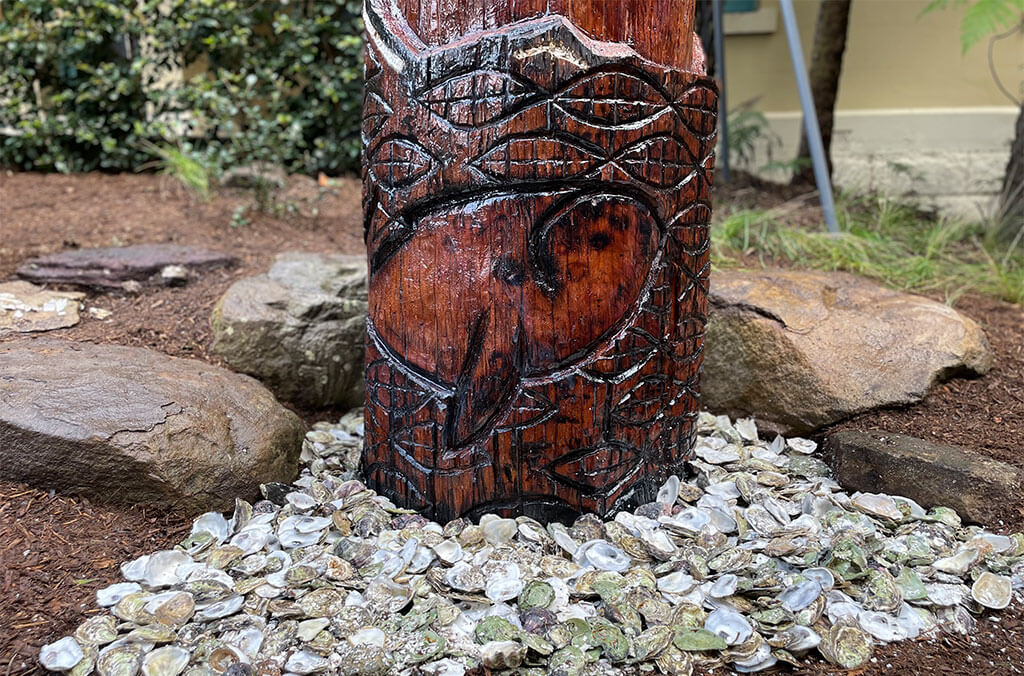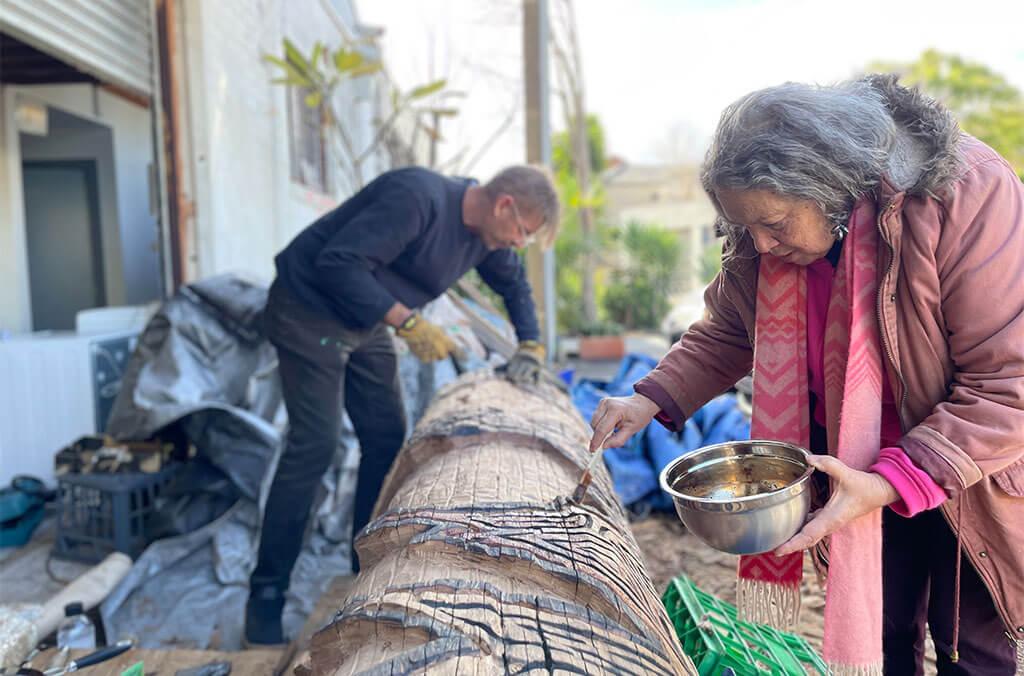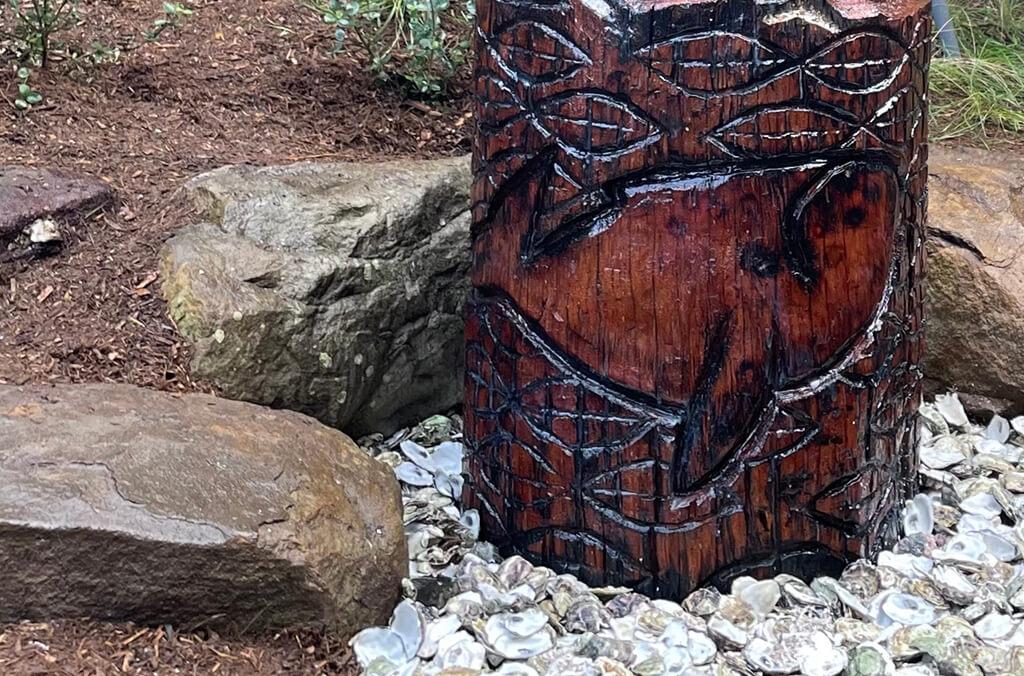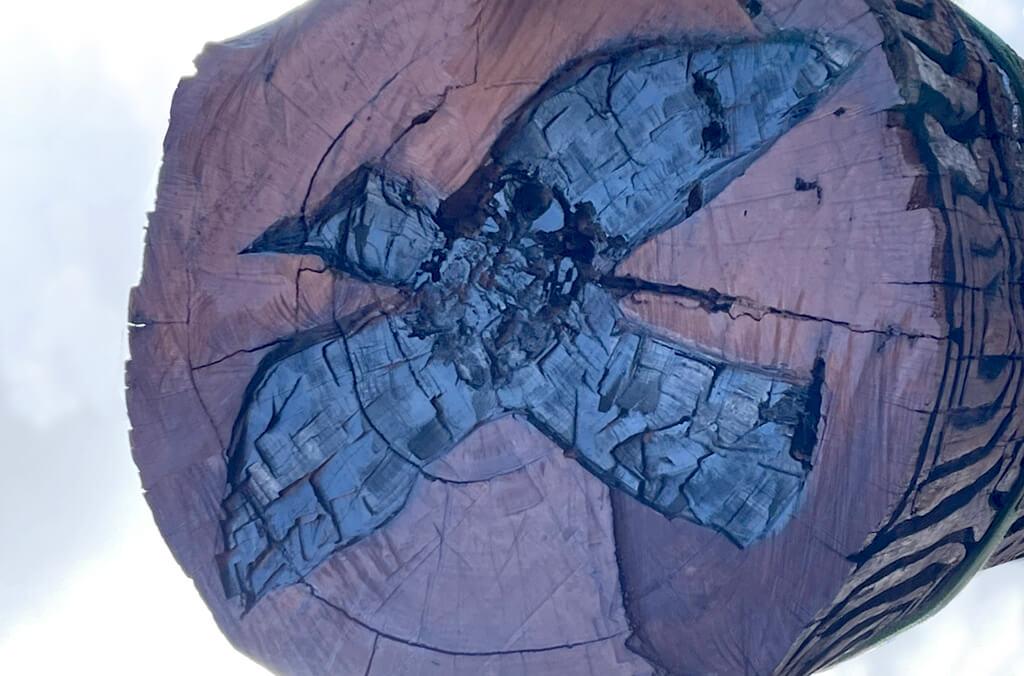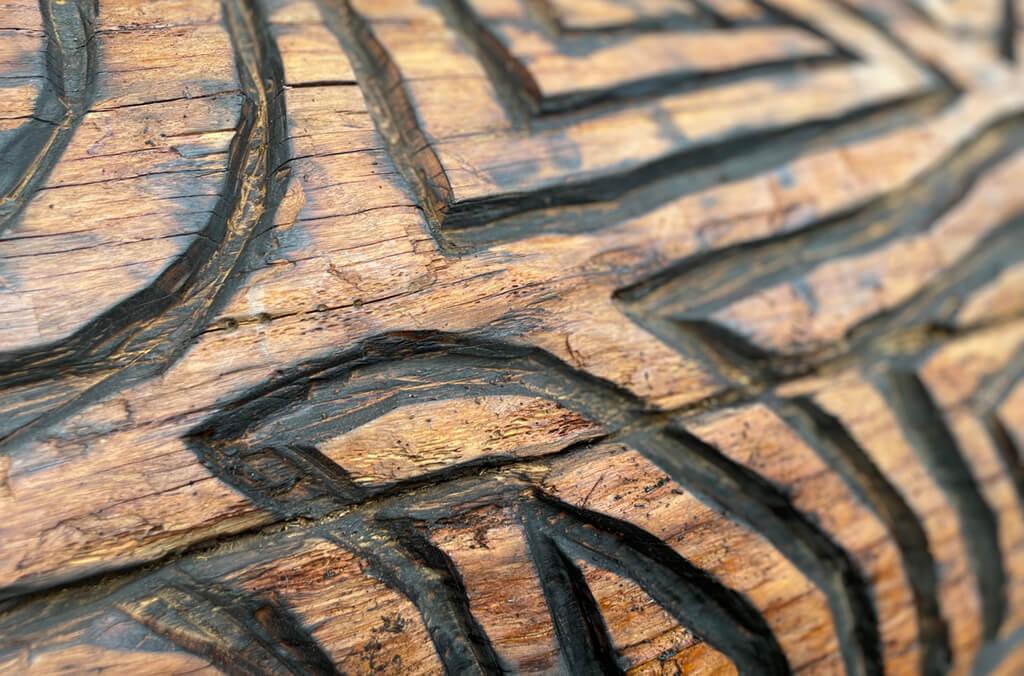Yer’ung – Spirit Tree
Welcoming us to Gadigal Country – a powerful artwork created by Darren Charlwood, guided by Aunty Rhonda Dixon-Grosvenor.
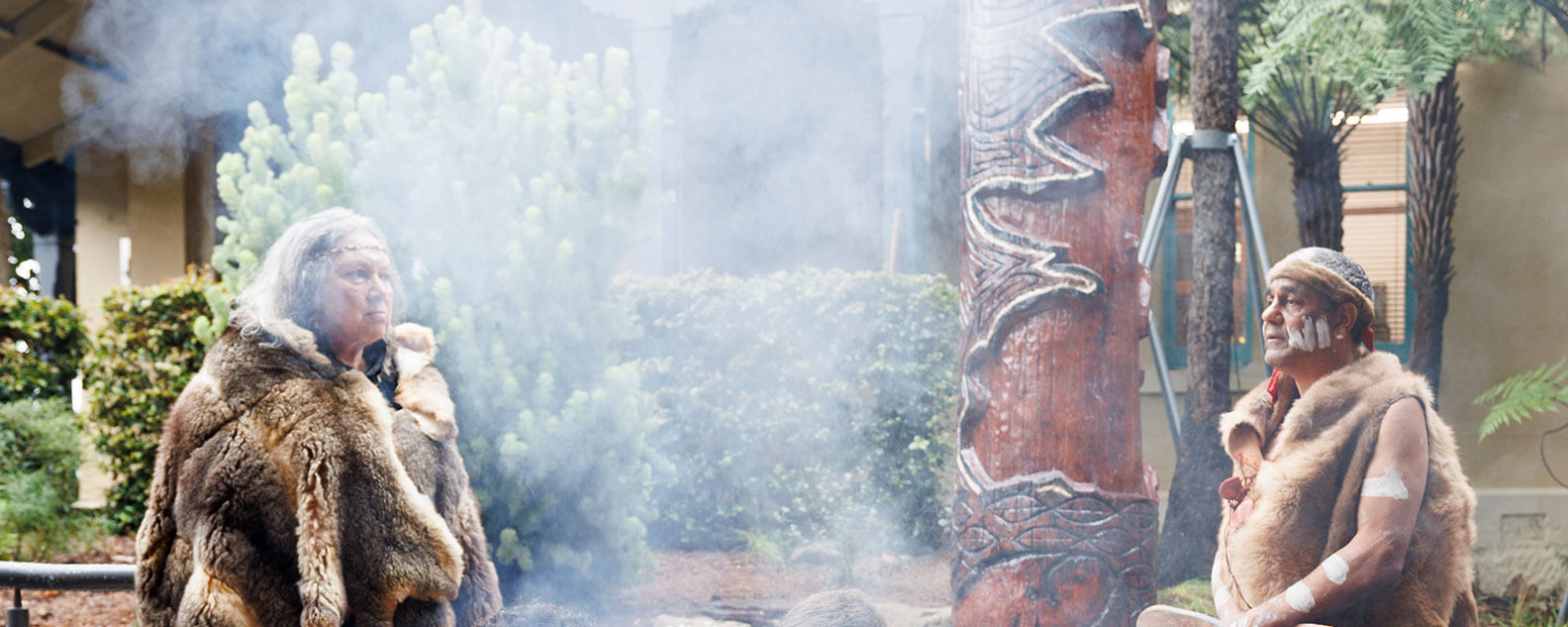
In 2024, Botanic Gardens of Sydney commissioned Darren Charlwood, a Wiradjuri artist, to work with Traditional Custodian Aunty Rhonda Grosvenor to create an artwork embodying the salt-water, land and sky of Gadigal Country.
The image above shows Aunty Rhonda Dixon-Grosvenor and Uncle Dean Kelly smoking and welcoming Yer’ung – Spirit Tree to its home at the Royal Botanic Garden Sydney on 8 July 2024.
"The Yer'ung - Spirit Tree is very important and powerful cultural symbolism of what it means for us as Indigenous people and it very much depicts the connection between Gadigal Country and Wiradjuri Country. It has been a beautiful experience and journey to work with and guide Darren and I think everyone will feel the spirit of the tree.”
Aunty Rhonda Dixon-Grosvenor, Gadigal Traditional Custodian
"I am extremely humbled to have this opportunity to create a Welcome to Country sculpture for the Royal Botanic Garden Sydney. My work is an expression of Aboriginality and it has been such an honour to work with Aunty Rhonda to bring the Yer’ung - Spirit Tree to life, connecting Gadigal Country and Wiradjuri Country.”
Darren Charlwood, Wiradjuri artist
Gadigal Country - Saltwater, Land and Sky
Working painstakingly by hand, Darren mapped country on the artwork — carving a crow’s-eye view of Warrane (Sydney Harbour). You can see Wuganmagulya, site of the Royal Botanic Garden Sydney, and neighbouring coves and inlets on either side of the harbour.
Darren carved Wiradjuri and Gadigal designs covering the tree, and the Gadigal salt-water totem Gurawal (the Whale) can be seen swimming north up the coast, singing songs of country.
On top of the sculpture, Darren included his totem – Waggan, the Crow, facing west towards Wiradjuri Country.
All the artwork materials were carefully chosen as deeply culturally significant and emblematic of Gadigal people, plants and place.
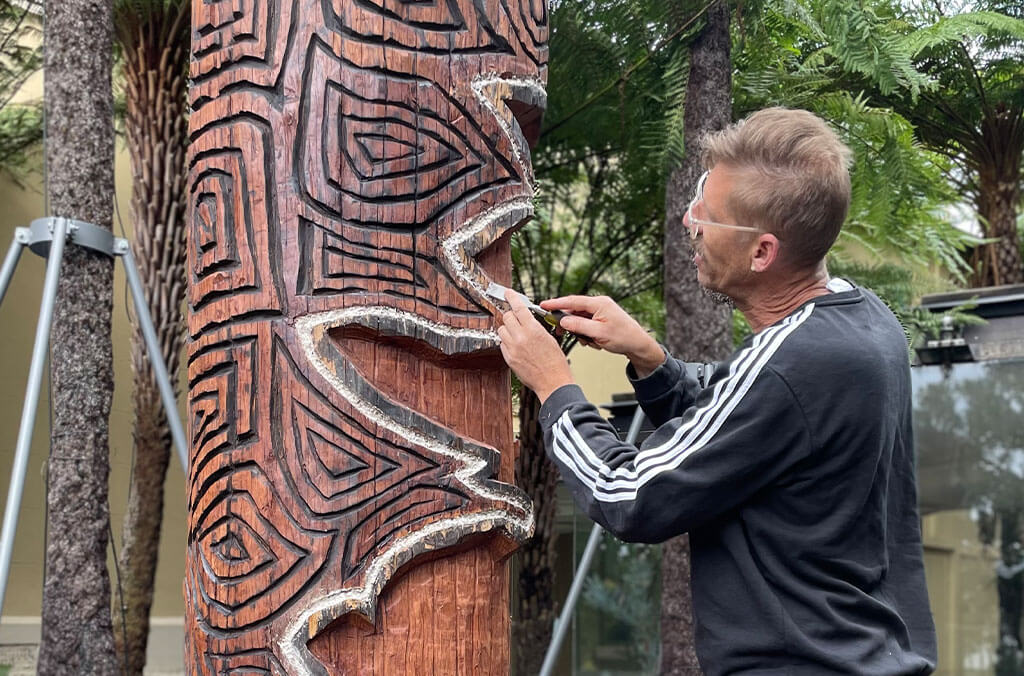
Wood
The work was created from a two-metre-tall trunk piece of Blackbutt (Eucalyptus pilulari), a local Gum Tree species that grows on Gadigal country. Darren burned the artwork as part of his creative process, referencing the First Nations practice of cultural burning on country.
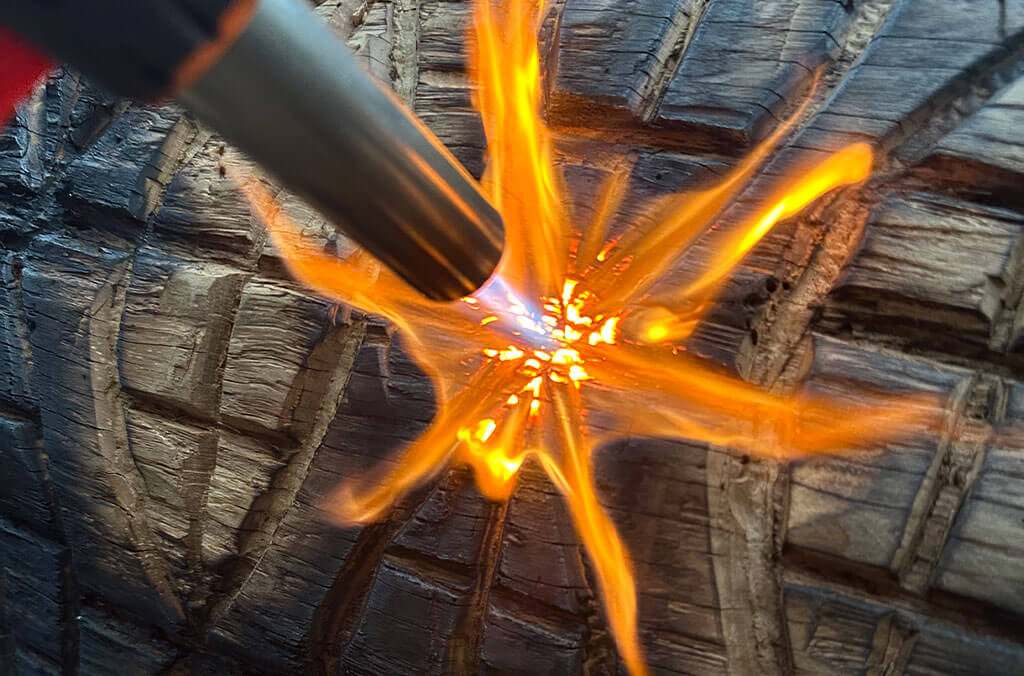
Oyster shells
Darren used the shells of Sydney Rock Oysters to mark the meeting place of land and water around the edge of the harbour. The shells are emblematic of saltwater country and connection between people and place. They also evoke the middens that were mined to make mortar for many of Sydney’s oldest buildings.
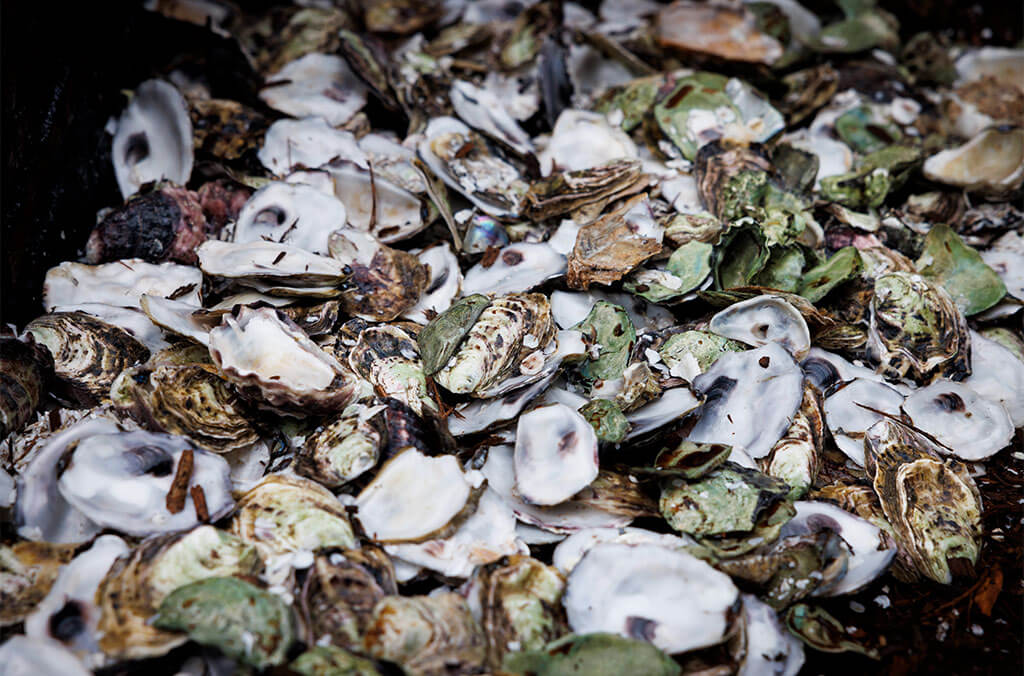
Resin
The sculpture is coated in Galgudya (grasstree) resin — used by First Nations peoples to harden shields, spears and other tools. Drawing connections across time and space, the resin was sourced from an 1897 National Herbarium of New South Wales historical collection on Gadigal country, and collected from plants in the three Gardens Living Collections.
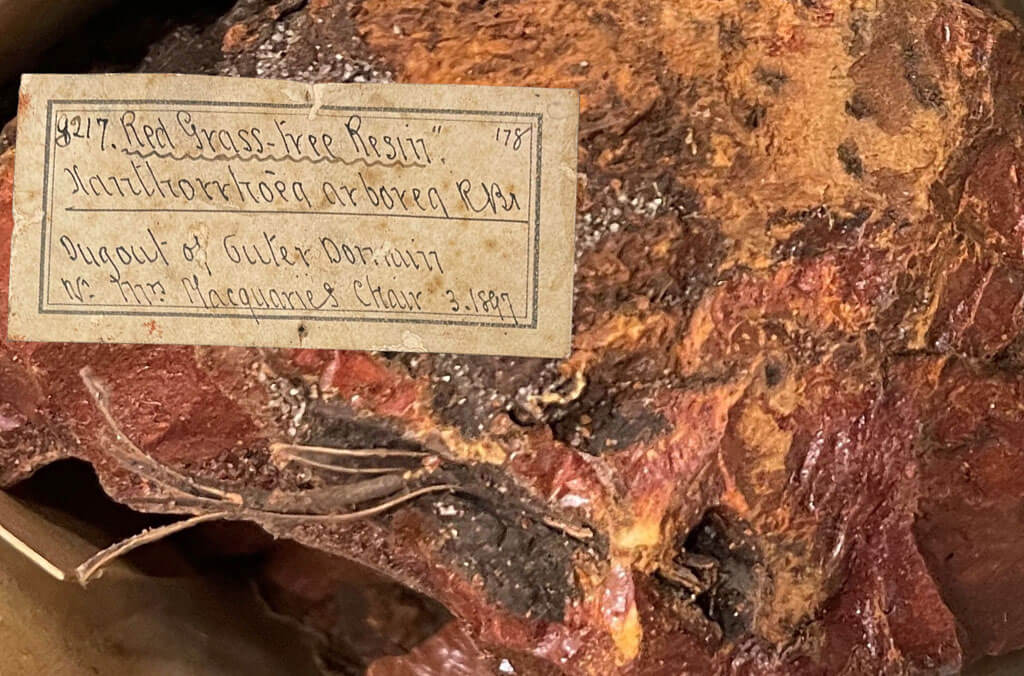
Stone
Sandstone is the foundation of Gadigal Country. The sculpture emerges from between shell-encrusted sandstone pieces within the Botanic Gardens of Sydney’s Reception garden.
